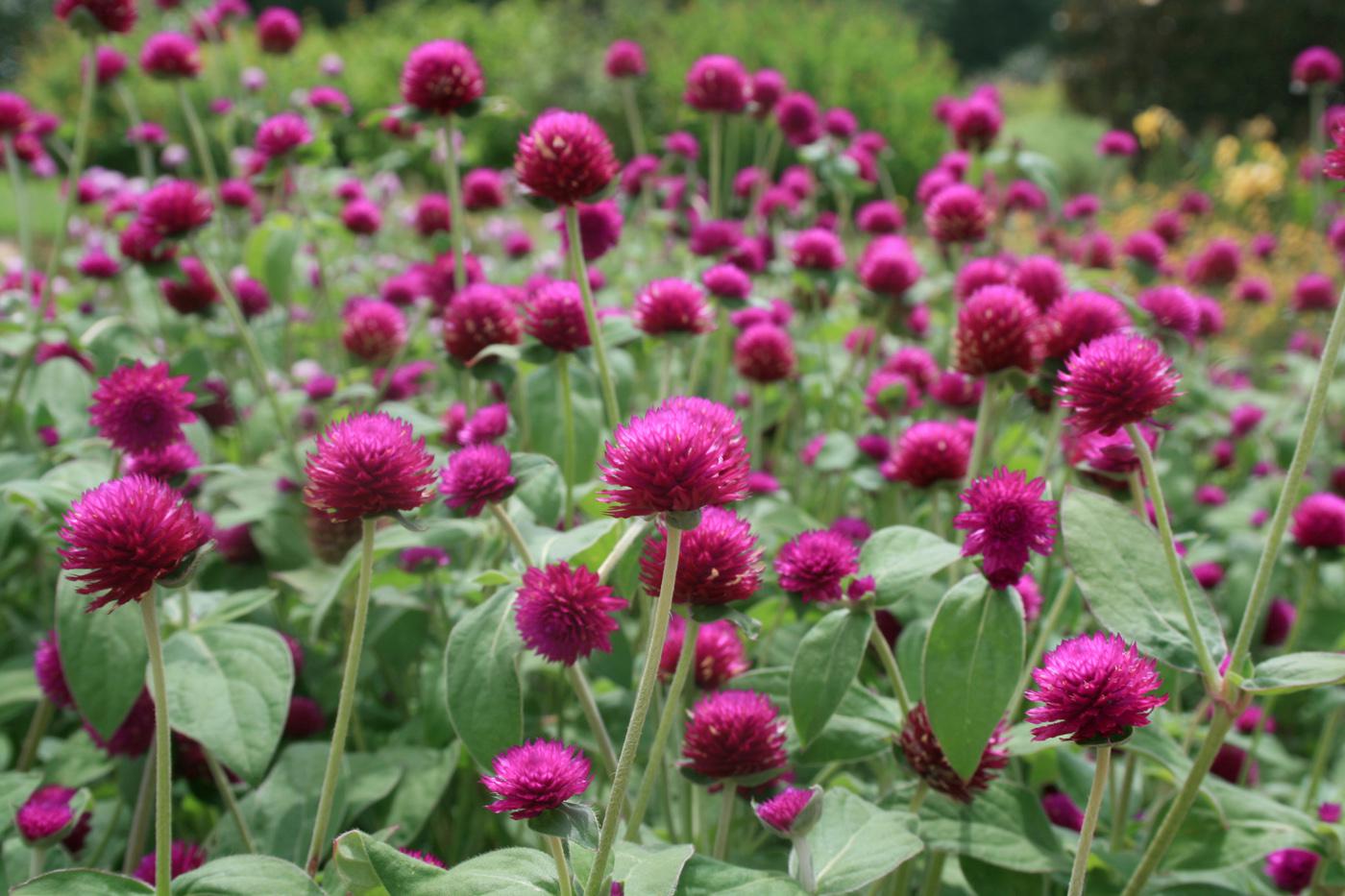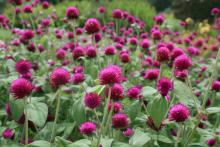Information Possibly Outdated
The information presented on this page was originally released on April 12, 2011. It may not be outdated, but please search our site for more current information. If you plan to quote or reference this information in a publication, please check with the Extension specialist or author before proceeding.
Tough Gomphrena makes good addition to gardens
If you’re looking for a tough plant to keep right on blooming despite the heat of the summer, try gomphrena in your garden. This is one tough plant that likes really high temperatures. Sometimes called globe amaranth, legend has it that the original planting was at the gates of Hades.
Gomphrena produces flowers from early summer to fall frost. The flowers look a lot like clover, seem to last forever and have a straw-like texture. The flower heads are actually bracts, which are leaves resembling petals. The small, inconspicuous flowers are noticeable only when the yellow stamens poke out. Flower colors range from white to purple and red.
Gomphrena is known botanically as Gomphrena globosa. It has relatively few pest problems. Because of its strong garden performance, gomphrena has been chosen a Mississippi Medallion winner twice in the past five years.
All-Around Purple gomphrena won in 2008. This 2-foot-tall plant attracts loads of butterflies to its purple flowers all summer long. Fireworks gomphrena was a Mississippi Medallion selection in 2010. It is a large plant that can reach 4 feet tall. Its iridescent pink bracts feature yellow stamens resembling tiny firecrackers exploding.
Gomphrena can be big, flowering annuals in the landscape. Some gomphrena are suitable for smaller garden or patio spaces. The Gnome series are compact plants that grow 10 to 12 inches tall and have white, pink and purple flowers. This compact selection makes a fine container plant or can be used as a border along a sunny path.
Be sure to plant gomphrena in full sun. The plant will tolerate partial shade, but full sun produces better flowers.
Plants will thrive in well-drained planting beds. Once established in the spring, gomphrena will become somewhat drought-tolerant, but you will have to water it during extended dry periods.
Gomphrena grows vigorously and should be fertilized at planting. I like to use a good, balanced, slow-release fertilizer, such as 14-14-14. Feed it with water-soluble fertilizer once every couple of weeks to encourage the plant to keep producing brightly colored flowers.
Deadheading really isn’t necessary, but do it if you feel the need to clean the plants up and remove spent flowers. You can do some other pruning to keep the plants looking neat.
Gomphrena makes a great cut flower and has a long vase life. Cut stems early in the morning and pair with other flowers from your garden.
Gomphrena also makes a good dried flower. Tie flower stems into bunches and hang them upside down to dry in an airy room out of direct light. The everlasting flowers will retain their color and are great additions to craft projects and dried flower arrangements.
Try companion planting gomphrena with lantana, melampodium and rudbeckia. It also looks great with Mississippi Medallion winner Diamond Frost euphorbia.








